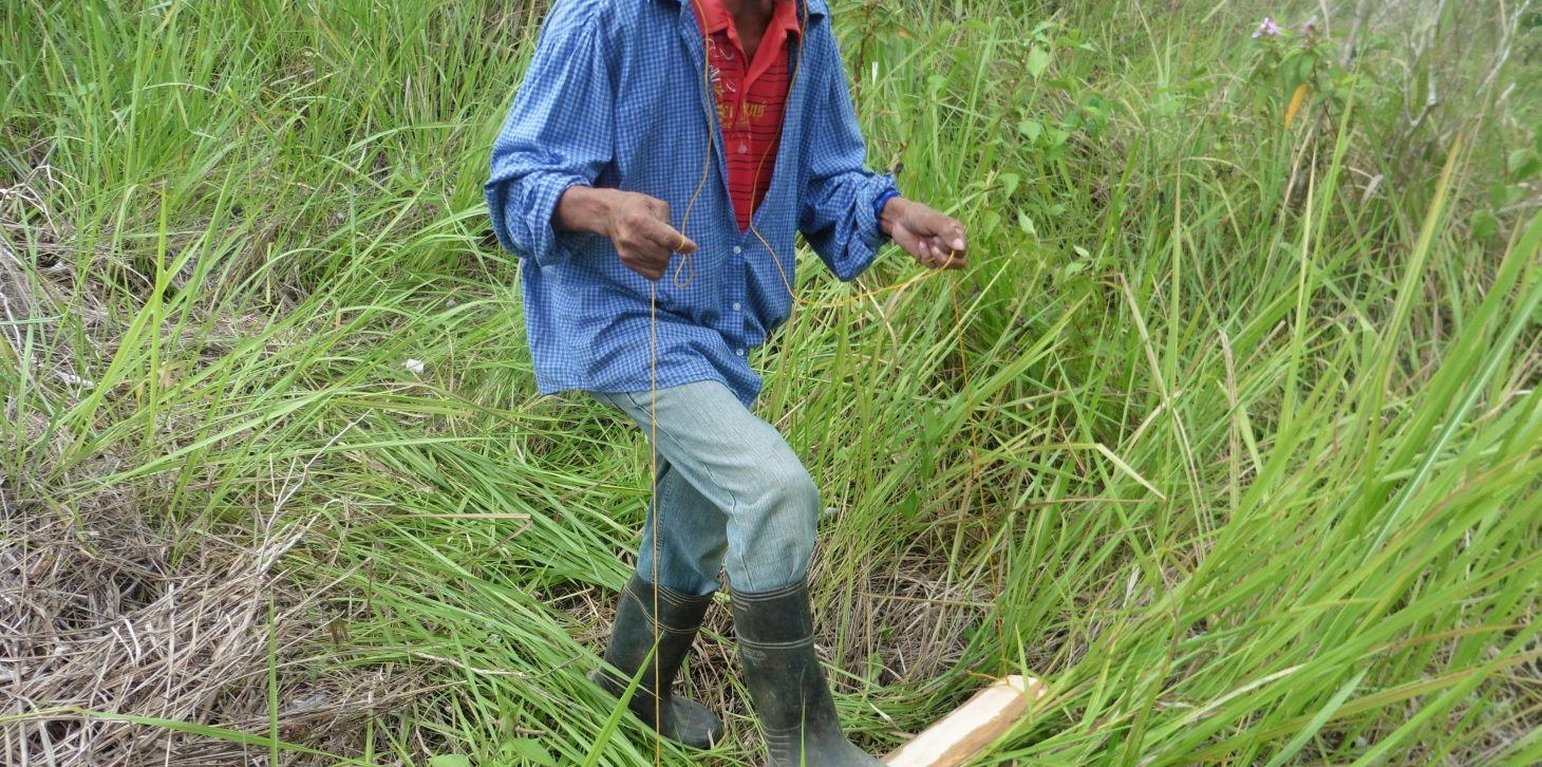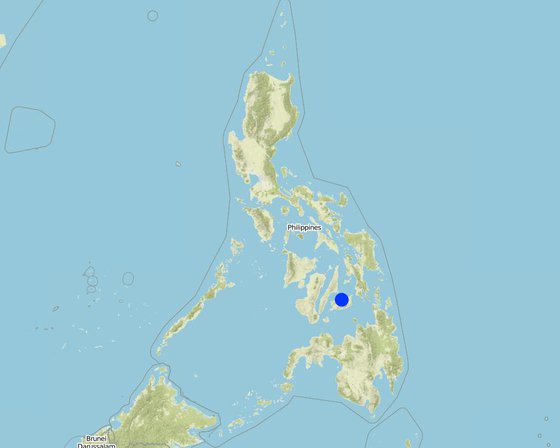



Cogon pressing is a simple low-cost technique of deterring the rapid growth of grasses that serve as competitors of wildlings for nutrient, water and light in the natural forest. The technology is described as the pressing down of cogon grass using a wooden plank tied in a rope, manually-operated by foot of the land user. Instead of cutting or burning the cogon, this technology is being used by the land user it was proven to be more effective in controlling cogon grass to grow fast. Wildlings are seedlings derived from seeds scattered by birds, insects, animals and wind without human intervention. By pressing the cogon, the wildlings can grow faster in the natural forest.
Purpose of the Technology: Cogon grass is a weed which grows quickly. It is difficult to control due to its small seeds carried by wind and rhizomes that are very resilient even to low soil fertility and harsh environment. In regenerating wildlings in the natural forest, these invasive weeds are the main competitor for nutrients water and space. The land user's common practice is to cut or burn the cogon grass in order to plant trees. However, this cannot be done in a natural forest because it destroys the flora and fauna. Thus, the indigenous technology of pressing the cogon grass was adapted to nurture wildlings of indigenous tree species. It allows the wildlings to grow naturally by reducing the competition from weedy species. It also provides an alternative technique of controlling weeds/grasses without burning. Burning grasses release greenhouse gases to the atmosphere.
Establishment / maintenance activities and inputs: Prior to the pressing of cogon grass, the selection of wildlings for natural regeneration is done by marking it with a peg. The wildling must be a robust/healthy indigenous tree species. Ring weeding is done at least one half meter radius around the wildling. Then, the surrounding cogon grass are suppressed through a method called “ pressing” or “lodging” using a wooden plank approximately 1” x 6-12” x 3-4’. A rope is knotted on both ends of the plank and looped over the shoulder of the land user for support and ease the pressing operation. The length of the rope is adjusted according to the height of the land user. The land user holds the rope on both side to lift the plank, and then, stepping on it to press the cogon grass repeatedly. The activity is done before and after the onset of rainy season. It is best to practice the technology when the stems of the cogon grass are still soft. The pressed cogon will last up to six months before it will produce new shoot and regenerate again.
Natural / human environment: The area is part of the forest reserve in Danao, Bohol primarily intended for nature conservation and protection. It is about 100-500 m.a.s.l with moderately rolling to hilly slopes. It is under humid tropics climate with an average annual rainfall of 1500-2000 mm per year. The soil is loam, shallow depth, low fertility, with good drainage and medium water storage capacity. The area has high biodiversity as indicated by the presence of different indigenous trees and plants species, and wild birds. The land users who apply the technology are small holder farmers. They are members of a local cooperative. The population density is about 10-50 persons per sq. km. Since extraction of resources from the forest is prohibited, off-farm income is very important to the land users. Access to basic services and infrastructures are low.

Location: Danao, Bohol, Brgy. San Miguel, Philippines
No. of Technology sites analysed:
Spread of the Technology: evenly spread over an area (0.2 km²)
In a permanently protected area?:
Date of implementation: more than 50 years ago (traditional)
Type of introduction



| Specify input | Unit | Quantity | Costs per Unit (peso) | Total costs per input (peso) | % of costs borne by land users |
| Labour | |||||
| Labour | ha | 1.0 | 24.44 | 24.44 | 100.0 |
| Construction material | |||||
| Wood | ha | 1.0 | 2.22 | 2.22 | 100.0 |
| Rope | ha | 1.0 | 1.78 | 1.78 | 100.0 |
| Total costs for establishment of the Technology | 28.44 | ||||
| Total costs for establishment of the Technology in USD | 0.63 | ||||
| Specify input | Unit | Quantity | Costs per Unit (peso) | Total costs per input (peso) | % of costs borne by land users |
| Labour | |||||
| Labour | ha | 1.0 | 26.68 | 26.68 | 100.0 |
| Total costs for maintenance of the Technology | 26.68 | ||||
| Total costs for maintenance of the Technology in USD | 0.59 | ||||
yes little, it generated jobs